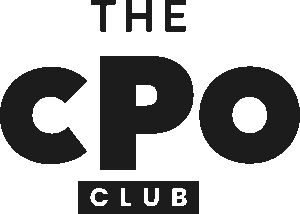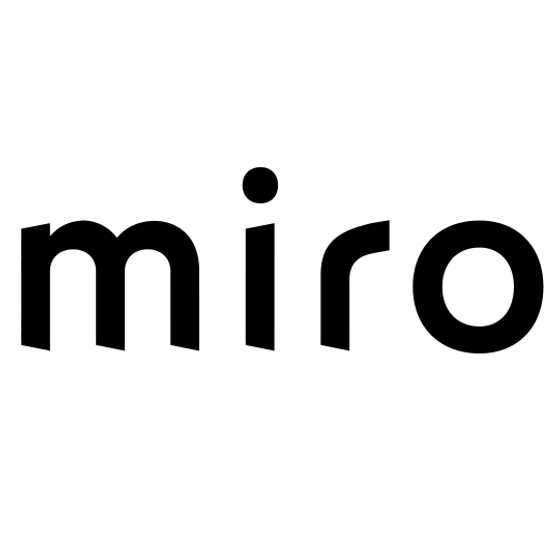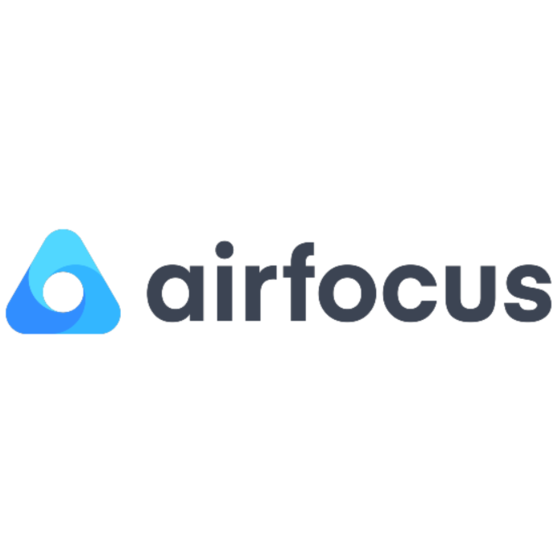10 Best Online Roadmap Tool Shortlist
Here's my pick of the 10 best software from the 19 tools reviewed.
The best online roadmap tools help you build, share, and update product roadmaps in real time—so teams stay aligned even as priorities shift. Without them, roadmaps often live in static slides or outdated spreadsheets that cause miscommunication and derail planning.
I’ve tested 25+ roadmap tools and know which ones offer flexible views, collaboration features, and integrations product teams actually use.
In this guide, you’ll find platforms that make it easy to visualize strategy, adjust timelines, and keep everyone on the same page, from leadership to delivery teams.
What is an Online Roadmap Tool?
An online roadmap tool is a web-based platform used to create, manage, and share visual roadmaps to enable teams to plan and communicate their strategic goals and project timelines effectively. Some of the features that make this possible are multiple timeline visualizations, milestone tracking, collaboration features, integration with project management tools, and the ability to customize and share roadmaps.
These tools provide a dynamic and collaborative environment for teams to outline and communicate strategic plans, align stakeholders on timelines, and track progress in real-time.
The Best Online Roadmap Tools Summary
| Tool | Best For | Trial Info | Price | ||
|---|---|---|---|---|---|
| 1 | Best for mapping product development workflows | Free plan available | From $8/user/month (billed annually) | Website | |
| 2 | Best for visualizing product plans | 14-day free trial available | From $249/month (billed annually) | Website | |
| 3 | Best to build roadmaps for presenting | 14-day free trial | From $19/month, paid annually | Website | |
| 4 | Best for running tests and experiments | 14-day free trial | From $25/month | Website | |
| 5 | Best for managing data from Jira and your CRM | Free plan available | From $9/user/month | Website | |
| 6 | Best library of roadmap templates | Free version available | From $19/user/month | Website | |
| 7 | Best for Agile development teams | 7-day free trial + free plan | From $7.75/user/month | Website | |
| 8 | Best online roadmap tool with idea management and whiteboarding | 30-day free trial available | From $9/user/month | Website | |
| 9 | Best for a flexible creative platform | 14-day free trial + free plan available | From $12.25/user/month (billed annually) | Website | |
| 10 | Best for scalability and flexibility | 14-day free trial | From $59/editor/month | Website |
Overviews Of The 10 Best Online Roadmap Tools
Here are my overviews of the 10 best online roadmap tools I’ve selected to highlight. I’ve included each platform’s best use case, standout features, integrations, and pros and cons. I also added a screenshot of the interface to give you a feel for the different tools.
Miro is a virtual whiteboard that can be used in various contexts, including product roadmapping and mapping out processes and workflows.
Why I picked Miro: I added this platform to my list because it’s highly versatile, yet well suited to a roadmapping use case. The whiteboard has all types of graphics and lines that can be used for mapping out your product plan. It’s also particularly useful for outlining workflows and processes. This is super helpful for your product development team because they can outline both the what and the how of your product roadmap in the same system.
Moreover, Miro's ability to upload existing charts facilitates seamless integration of prior work. Collaboration tools like voting, stickies, and comments enable real-time feedback and adjustments. Additionally, the TalkTrack feature supports asynchronous communication through video explanations of workflows, making it easier for teams to share insights.
Miro Standout Features and Integrations
Standout features include the product’s vast template library and wireframing capabilities. There are tons of templates to choose from and customize, or you can easily start with a blank slate. Whiteboards also have infinite zoom, allowing you to go way back or way into your design. You can also use the platform for wireframing, making it a flexible and valuable tool for product development at various stages. Other useful tools include quick diagramming and a dependencies app, which helps teams visualize and manage task dependencies across projects.
Integrations include Webex, Figma, Jira, Azure DevOps, Confluence, Confluence, Notion, Asana, monday.com, Trello, Slack, Microsoft Teams, Google Workspace, Zoom, and 100+ others. You can access thousands of additional tools using a Zapier integration. This may require an additional expense.
Pros and cons
Pros:
- Large template gallery
- Intuitive and friendly interface
- Free plan available
Cons:
- Highly versatile, may not be specialized enough
- Lacks advanced roadmapping features
New Product Updates from Miro
Miro's Integration with Adobe Express
Miro now integrates Adobe Express for seamless image and design editing directly within its platform. For more information, visit Miro's official site.
LaunchNotes is an online roadmap tool that helps product teams centralize updates and keep stakeholders aligned. It combines visual roadmaps with announcement tools and feedback collection so you can clearly share what’s coming next and why it matters.
Why I picked LaunchNotes: I added this platform because it goes beyond static roadmaps by combining planning with communication. You can visualize product plans while also publishing release notes, changelogs, and updates directly to your customers or internal teams. I also like that it collects feedback alongside updates, which helps you prioritize based on real user input instead of assumptions.
LaunchNotes Standout Features and Integrations
Standout features include a changelog that organizes every update, ensuring nothing slips through the cracks. The in-app widget embeds announcements where your users already work, keeping updates visible and timely. LaunchNotes also supports AI-assisted writing for drafting professional announcements faster.
Integrations include Jira, Confluence, Loom, Slack, Microsoft Teams, Intercom, Notion, Gmail, Google Workspace, LinkedIn, Hubspot, Zapier, and many others.
Pros and cons
Pros:
- AI-powered announcement writing
- Embedded in-app update widget
- Intuitive drag-and-drop roadmaps
Cons:
- Fewer customization options
- Limited roadmap automation
Roadmunk is a roadmapping tool that’s designed to help you craft presentation-ready product roadmaps quickly.
Why I picked Roadmunk: I added this platform to my list for those of you who need to present a roadmap to your stakeholders ASAP. This software is great for whipping up a visually appealing roadmap quickly and easily. You can opt for a timeline or swimlane view, and create multiple roadmaps using the same data. The roadmaps you create in the platform can be exported as URLs, PNG, or HTML files for easy sharing. Multiple templates are also available to help speed up your roadmap creation.
Roadmunk Standout Features and Integrations
One standout feature is definitely the software’s template hub. There are dozens of roadmap templates to choose from, covering technology, business, and product needs. The templates are fully accessible in the platform’s free trial. This is nice for people who want to give it a try, or need to create their roadmap quickly for a presentation. Templates can be customized using your data set, and you can allocate resources and set milestones to suit your needs.
Integrations include Jira, Azure DevOps, and Trello. An API is also available for building custom integrations.
Pros and cons
Pros:
- Easy sharing in multiple formats
- Quick setup and easy to navigate
- Lots of self-serve support content
Cons:
- Additional fees for some add-ons
- Integrations limited on lower price tiers
GLIDR is a product management solution that helps you build a data-driven product roadmap and run tests and experiments on your product.
Why I picked GLIDR: I chose to add this software to my list because of its focus on experimentation. Not only can you build product roadmaps in the platform, but you can also consolidate all of your product data in one place. From user research to customer feedback and test results, you’ll have plenty of data to make decisions about what to build next. The public portal lets you run tests with real users, and analyze the feedback and data you get from their experience. It’s well-suited to innovative teams that want to build their product in an iterative way, or startups striving to find product-market fit.
GLIDR Standout Features and Integrations
Standout features include the built-in knowledge database. You can store all of your feedback and data from running experiments and user research in one place. The repository is searchable, helping you find the insights and data you’re looking for quickly and easily. Another cool feature is the public portal and public roadmaps. This helps you run user testing and keep external parties in the loop about what’s coming up in your product.
Integrations include Zoom, Figma, Jira, Intercom, Trello, Slack, and a Chrome Extension. Zapier can also be connected to configure additional integrations.
Pros and cons
Pros:
- Connects product with go-to-market strategy
- Easily save data from tests run through system
- Good for data-driven product development
Cons:
- Integrations limited in starter plan
- Starter plan limited to 1 project
Visor is a unique tool that brings together data from your team's tech stack, so you can manage, analyze, and update it in one place.
Why I picked Visor: This platform made it onto my list because it allows you to build roadmaps using data from multiple sources. Rather than being a standalone product or project management platform, it pulls information from your various SaaS apps so you can build customized views. Its two-way syncs let you craft detailed roadmaps with data from your CRM and project management tool, and update information across your tools in one place.
Visor Standout Features and Integrations
Standout features include the software's intuitive and user-friendly interface. You can easily create unique views of your data using the drag-and-drop functionality, to create visual representations of your roadmap or other configurations quickly. Table, Gantt chart, and timeline views are also available for a quick setup.
Once you have your view created, you can customize it to effectively represent your information with color coding. Another nice feature is the ability to add detailed notes to your tasks and milestones. This helps keep your team up to date and aligned on important context.
Integrations include Jira, Salesforce, and HubSpot.
Pros and cons
Pros:
- Free plan with a solid feature set
- High level of security, SSL encrypted communication
- Live phone & video support with paid plans
Cons:
- Added fees for additional sync credits
- Limited integrations currently available
Venngage is a web-based creative platform that can be used to craft roadmaps and other types of assets, with a broad template gallery to get you started.
Why I picked Venngage: If you need to create a roadmap quickly, and want a pre-built template to get you started, this could be the right platform for you. Its template bank hosts over 10,000 ready-made outlines that can be used for various purposes. It has Scrum, product development, portfolio, website, release, and other specialized roadmap templates. Many of the templates are available for free, which lets you give the tool a try before you buy.
Venngage Standout Features and Integrations
Standout features include the platform’s additional templates, which cover things like timelines, presentations, proposals, mind maps, and more. You can use the same platform to outline and share your work with stakeholders and other teams. This is especially useful for product teams that need to keep other departments in the loop on their plans and progress. Another helpful feature is the knowledge base, which has tons of courses and webinars to ramp up your design skills.
Integrations can be built using the platform’s API.
Pros and cons
Pros:
- Self-serve customer support content
- Friendly drag-and-drop interface
- Free plan available
Cons:
- Highly versatile, may not be specialized enough
- Lacks advanced roadmapping features
Jira is a tried-and-true product management software that provides developers with a system for tracking, organizing, and prioritizing tasks.
Why I Picked Jira: I chose this platform for my list because of the level of detail and the flexibility it offers. You can create customized, timeline-based product roadmaps in the software, and Kanban and Scrum templates are also available. Products can be broken down into smaller pieces that can be categorized as stories, issues, and tasks. Tasks can be assigned right from the roadmap view, helping keep everyone aligned on responsibilities and ownership. The entire platform is built around an Agile methodology, and helps you track progress and shift priorities as needed.
Jira Software Standout Features and Integrations
Standout features include the software's tracking and customization capabilities. Tracking helps you monitor your product’s progress throughout development. All tasks associated with a particular issue are tracked, and you can use the reporting tool for an up-to-date snapshot of your team’s progress. The roadmapping and task management tools are highly customizable, but so are the views. You can select from various views available to get an overview of your product plan from whatever perspective is best suited at the time.
Integrations include Adobe, Dropbox, Figma, Google Workspace, InVision, Microsoft, Miro, Slack, Zendesk, Zoom, and more.
Pros and cons
Pros:
- Works well with other Atlassian products (Confluence, Trello, Bitbucket, etc.)
- Built-in resource management
- Highly customizable and detailed
Cons:
- No mass-editing and scripting
- Linking between stories and tasks could be improved
Aha.io is a product management software company that offers roadmapping and idea management solutions as well as a virtual whiteboard tool.
Why I picked Aha.io: This platform covers several aspects of your product planning and management processes. Its roadmapping tool offers everything you need to map out your plan, like timeline views and swimlanes. But you also get tools to help you ideate, strategize, and prioritize, which is why I added it to my list.
Whiteboards allow your product team to brainstorm and connect ideas collaboratively. From there, they can use the idea management module to refine their ideas and gather feedback. Finally, prioritization comes with built-in scoring options to ensure the most impactful work gets done first.
Aha.io Standout Features and Integrations
Standout features include the software’s AI capabilities, which include a writing assistant and smart feedback management. The AI can help you draft everything from meeting notes to release memos and even product announcements. Meanwhile, the software’s AI can also help you interpret and categorize feedback. This really helps speed up your processes, from bringing new features and products to market to testing them with real users and implementing customer feedback.
Integrations include Azure DevOps, GitLab, GitHub, Jira, Trello, Asana, Slack, Microsoft Teams, Pivotal Tracker, and Rally, among others. You can also integrate with thousands of additional tools using Zapier.
Pros and cons
Pros:
- Highly customizable and flexible
- Lots of self-serve support content
- Robust, comprehensive feature set
Cons:
- Comes with a learning curve
- Reporting is somewhat basic
Visme is an online creative platform you can use to build nearly anything, including product roadmaps.
Why I picked Visme: This is a super flexible platform that can be used for so many different things, roadmaps being just one of them. I added it to my list because depending on how your team works, you might be looking for a versatile tool for creating various types of assets. In addition to roadmaps, you can develop mockups, presentations, charts and graphs, video content, and more.
This software can be a useful tool to add to your team’s toolkit because it can be used for creating engaging content for stakeholders and other audiences. For example, you can create product mockups to go alongside a pitch deck. Or, you can develop data visualizations to outline product performance or user research. You might even craft customer-facing documentation to improve the onboarding experience and adoption of your product.
Visme Standout Features and Integrations
One standout feature of the product is its built-in templates. You can select from a large bank of ready-made roadmaps to customize and create your own. There are templates for various other assets, too, which is especially helpful if your team is lacking in design or UX expertise. Another nice feature is the ability to implement custom branding into your roadmaps. This makes for a visually appealing, on-brand roadmap that’s ready for presenting to investors and other key stakeholders.
Integrations include Google Analytics, Google Drive, OneDrive, Dropbox, Loom, Slack, Typeform, JotForm, HubSpot, Salesforce and Mailchimp, among others.
Pros and cons
Pros:
- Large template library
- Friendly drag-and-drop interface
- Free plan available
Cons:
- Highly versatile, may not be specialized enough
- Lacks advanced roadmapping features
Airfocus is a product management platform with roadmapping, user feedback, and strategy tools to help you take your product from concept to delivery.
Why I picked Airfocus: This platform offers a robust feature set for managing your product development from start to finish. But it made it onto my list because of its unique scalability. You can start using the software with just its pre-built templates, and then build out a custom, modular solution as you grow.
Each functionality is its own app, and you can select them as add-ons. This allows you to create a bespoke solution that provides precisely the feature set you need, with no extras that will gather metaphorical dust. Add-ons include priority ratings, insight management, custom forms, portals, and more.
Airfocus Standout Features and Integrations
A noteworthy standout feature is the feedback management component. You can collect user feedback through custom forms, but also centralize feedback coming from other channels like from email, chat, and customer support tickets. Feedback can be linked to ideas, opportunities, and features in the platform to inform how you build your product. You can also tap into customer insights during prioritization.
Integrations include Jira, Trello, Asana, Azure DevOps, Microsoft Planner, GitHub, Webhooks, Intercom, Salesforce, Slack, Microsoft Teams, and more. You can also connect a Zapier account to unlock additional integrations.
Pros and cons
Pros:
- Customer feedback management included
- Suits small and large-scale product development
- Uniquely scalable modular solution
Cons:
- Setup and configuration can be cumbersome
- Comes with a learning curve
Other Online Roadmap Tool Options
Here’s a list of the tools that didn’t make it to the top, but are still worth your consideration:
- Craft.io
All-in-one product management solution
- PathPro
For public roadmaps
- ProdPad
With OKR planning included
- Productboard
For implementing user feedback
- ProductPlan
For its high-level security features
- ClickUp
Complete work management platform
- Targetprocess
For comprehensive business planning
- Notion
For creating roadmaps within an intranet
- Hygger
For simplicity and user-friendliness
Selection Criteria For Online Roadmap Tools
Here’s a short summary of the main selection and evaluation criteria I used to develop my list of the best product roadmap software for this article:
Core Functionality
Before getting into specific features, I always look for the core functionality of a product. When it comes to online roadmap tools, here are the core capabilities I expect to see:
- The ability to create a product plan, and
- A visual representation of your product roadmap.
Key Features
Beyond the basic functionality I’ve outlined above, here are some of the top roadmapping features I saw in my research:
- Timeline management: You should be able to schedule milestones and you may be able to schedule resources, too.
- Project management tools: Many platforms have sprint management, tasks and dependencies, swimlanes, workflows, etc.
- Backlog prioritization: Most tools allow you to prioritize projects and initiatives from your backlog using Scrum and other methodologies.
- Multiple view formats: Configure your roadmap as a Kanban board, Gantt chart, timeline, calendar, and other visual roadmap views.
- Collaboration features: You might be able to plan your roadmap collaboratively in real time. You can also usually share roadmaps easily with collaborators and stakeholders.
- Customer feedback: Some tools allow you to solicit feedback from users to inform new features, new products, and your product vision.
- Roadmap templates: Many platforms have product roadmap templates to help speed up your roadmap planning process.
- Reporting dashboards: Most tools have reporting and analytics capabilities to help you track progress and team performance against business goals.
Usability
Next up in my assessment criteria, I looked at the user-friendliness of the roadmap software’s user interface. Many of these platforms have a drag-and-drop interface, which makes it easy to set up and customize your product roadmap. Ideally, the roadmap workspace should be intuitive to navigate without too much of a learning curve. I also looked for smart, straightforward automations for streamlining your product development process.
Integrations
It’s important for your online roadmap tool to connect easily with your other core SaaS products. I looked for integrations with popular project management software like Trello, Asana, monday.com, and Wrike. I also looked for integrations with other popular workplace tools like Slack and Google Workplace. Integrations with popular development team tools like Github and Azure DevOps are also a bonus, as are APIs you can use to build custom integrations.
Pricing
Your software budget is often the final frontier in selecting a new SaaS tool to add to your team’s toolkit. So what’s the average price of an online roadmap tool? I tried to get the price per month on a monthly payment plan so you don’t have to commit long-term if you don’t want to. Some offer free plans or free versions that are suitable for small teams and startups. But if you’re looking for more advanced product features, a paid plan will usually offer what you need.
Online Roadmap Tools FAQs
Still have questions about product roadmapping, and the online tools that facilitate it? I’ve answered some common questions on the topic for you here.
How do online roadmap tools support collaboration between product teams and stakeholders?
Online roadmap tools make collaboration easy by centralizing updates, comments, and feedback. You can share the same visual roadmap with your team and stakeholders, assign tasks, and track progress in real time. Built-in notifications and permissions keep everyone aligned and make sure only the right people can make changes.
What integrations should I look for in an online roadmap tool?
Look for roadmap tools that integrate with project management platforms like Jira, Trello, or Asana and communication tools like Slack or Microsoft Teams. Integrations with analytics platforms, file storage, and version control systems can also help your team keep everything in sync and avoid manual updates.
How secure are online roadmap tools for sharing sensitive product plans?
Most online roadmap tools offer strong security with encryption, role-based access, and user authentication. You should check for SOC 2 compliance, SSO support, and detailed permission settings so your sensitive product information stays protected. Always review the vendor’s security documentation before sharing confidential plans.
Can I customize roadmap templates in these tools to fit my workflow?
Yes, most online roadmap tools let you customize templates, layouts, and fields to match your team’s process. You can usually add custom milestones, set different views (like timeline, swimlane, or Kanban), and color-code items for clarity. This helps you adapt the tool to the way your team works best.
What’s the best way to get stakeholder buy-in when adopting a new roadmap tool?
Start by involving stakeholders early in the selection process and gathering their input on needs and pain points. Show how the new tool will make updates, communication, and reporting easier for everyone. Offer hands-on demos and simple training so stakeholders feel comfortable and see immediate value.
What’s Next?
So, hopefully now you have a better sense of the online roadmap tools available to you. Remember, there is no single best product roadmap software. But there are a ton of options, and it’s worth investigating which one will most effectively meet your needs. With the information outlined in this article, you should have what you need to find the best product roadmap tool for your team!
Want to stay up to date on the latest content from The CPO Club? Subscribe to our newsletter mailing list!






















